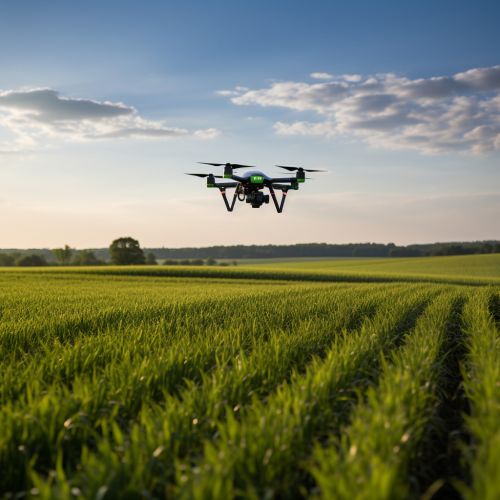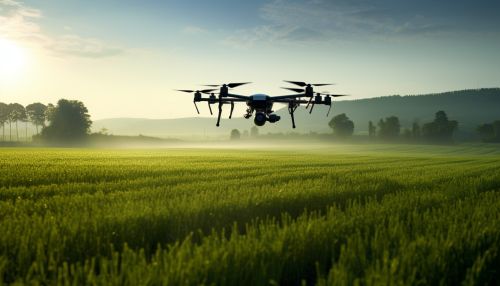Precision Agriculture and Crop Monitoring
Introduction
Precision agriculture, also known as precision farming or precision ag, is a farming management concept that uses observation and measurement techniques to optimize returns on inputs while preserving resources. It relies heavily on new technologies like satellite imagery, information technology, and geographic information systems (GIS) to enhance crop yields and profitability while minimizing the negative impacts on the environment that come with traditional farming methods.


History and Development
The concept of precision agriculture first came into existence during the early 1990s in the United States. The development of GPS technology played a significant role in the advancement of precision agriculture. The ability to locate precise position in a field allows for the creation of maps of the spatial variability of as many variables as can be measured (e.g., crop yield, terrain features/topography, organic matter content, moisture levels, nitrogen levels, pH, EC, Mg, K, and others).
Technologies in Precision Agriculture
Precision agriculture technologies cover a broad range of equipment and software, including GPS, yield monitors, variable rate technology (VRT), and remote sensing. These technologies allow farmers to accurately manage variations in the field, increasing the effectiveness of pesticides and fertilizers, and avoiding over-application.
Global Positioning System (GPS)
GPS is a crucial technology in precision agriculture. It provides farmers with precise location data, allowing them to create and use detailed maps of their fields. These maps can then be used to guide the application of inputs in a way that maximizes their effectiveness and minimizes waste.
Yield Monitors
Yield monitors are devices that can measure the amount of crop that a combine harvester is harvesting at any given point in time. This data can then be used to create yield maps, which can help farmers identify areas of the field that are particularly high or low yielding.
Variable Rate Technology (VRT)
Variable rate technology allows farmers to apply different amounts of inputs, such as seed, fertilizer, and pesticide, to different parts of a field. This is based on the specific needs of those areas, as determined by GPS-based yield maps and other data sources.
Remote Sensing
Remote sensing technology, such as drones or satellites, can provide farmers with detailed and timely information about the condition of their crops. This can help them to identify problems early and take corrective action.
Crop Monitoring in Precision Agriculture
Crop monitoring is a critical aspect of precision agriculture. It involves the regular observation and measurement of crop growth and development, pest and disease occurrence, and environmental conditions. This information is then used to make informed decisions about crop management.
Soil and Crop Sensors
Soil and crop sensors can provide real-time data on a variety of factors, such as soil moisture, nutrient levels, and crop health. This information can be used to guide irrigation and fertilization decisions, helping to optimize crop yields and reduce waste.
Weather Monitoring
Weather monitoring is an important part of crop monitoring in precision agriculture. Weather conditions can significantly impact crop growth and development, as well as the occurrence of pests and diseases. By closely monitoring weather conditions, farmers can make more informed decisions about when to plant, irrigate, and apply pesticides and fertilizers.
Pest and Disease Monitoring
Pest and disease monitoring involves the regular observation of crops for signs of pest or disease damage. If pests or diseases are detected early, farmers can take corrective action before significant damage occurs.
Benefits of Precision Agriculture
Precision agriculture offers several benefits over traditional farming methods. These include increased crop yields, reduced use of pesticides and fertilizers, improved environmental sustainability, and increased profitability for farmers.
Challenges and Future Directions
Despite its many benefits, precision agriculture also faces several challenges. These include the high cost of technology, the need for specialized knowledge and skills, and issues related to data management and privacy. However, ongoing advances in technology and research are expected to help overcome these challenges and drive the further adoption of precision agriculture.
